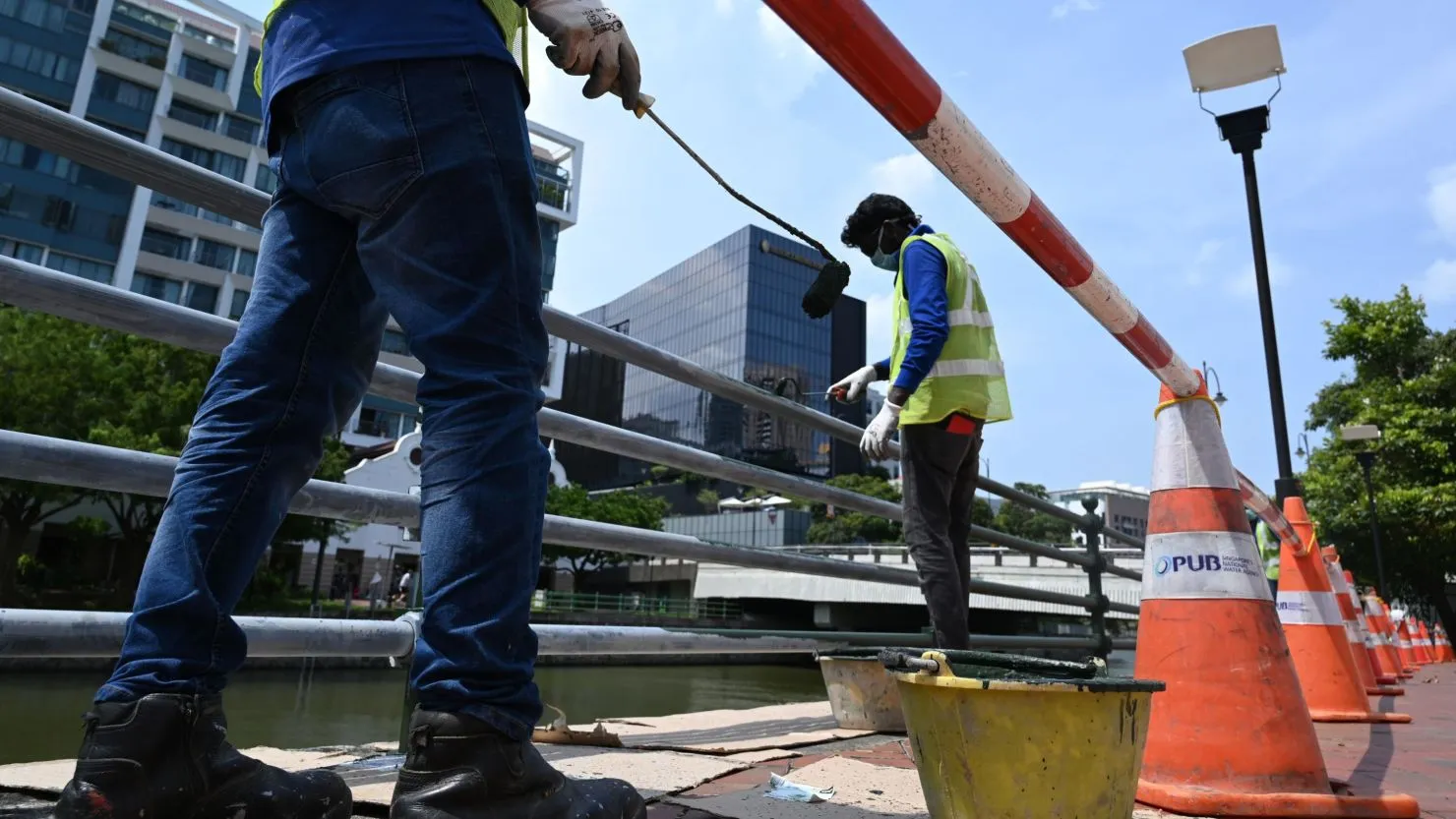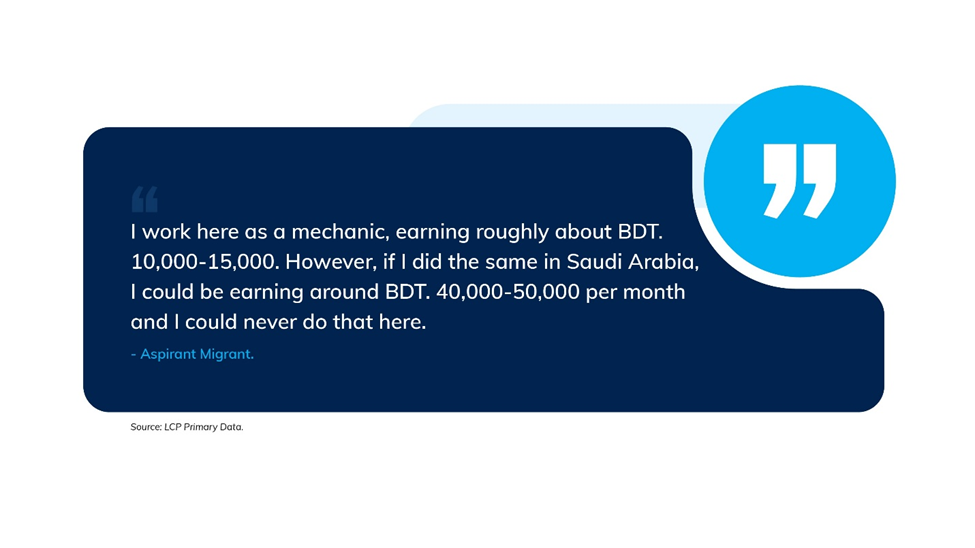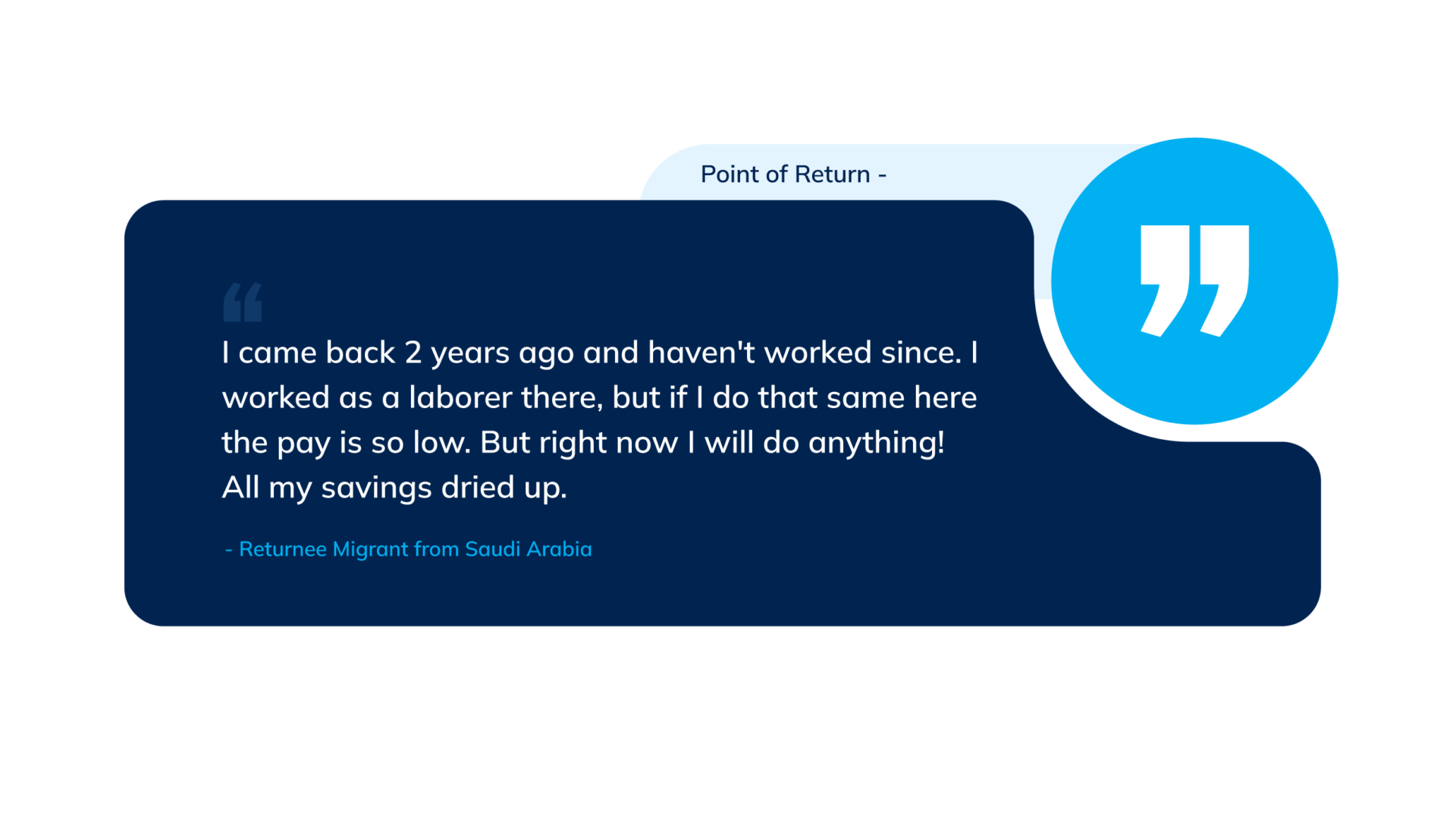GET IN TOUCH
- Please wait...

The history of migration from Bangladesh dates back to the British ruling period during the 18th and early 19th centuries. [1] Sailors who served in the British merchant navy started migrating to port cities like Liverpool and London. During the post-World War II period, despite rigid policies and restricted movements, migration gained momentum to meet the surging demand for cheap labor in the United Kingdom. These sailors originated from the Southeastern and Northeastern parts of the country, including Chittagong, Noakhali, and Sylhet. Owing to these pioneers, the spirit of exploration grew within their relatives and peers, resulting in a transnational connection between Bangladesh and the UK.
In the 1970s, after the Middle East became a major oil supplier to the world, opportunities for migration expanded further in the region. Saudi Arabia and the United Arab Emirates started welcoming a surge of unskilled and semi-skilled labor from various developing countries including Bangladesh to meet the rising labor demand. Bangladeshis were quick to cease such entry opportunity. In the post-independence era, remittances sent back home arguably stabilized the haywire economic engine and transformed the lives of millions in Bangladesh. [2]
Over time, the stable growth of overseas employment and remittance flows has become an important pillar of the economy and is expected to remain so in the near future. According to UN estimates, more than 7.4 million Bangladeshis lived abroad as of 2020, and this number is projected to grow further.

Even today, remittance is continuing its crucial role in advancing Bangladesh’s socioeconomic development, and directly impacts poverty alleviation, reduces unemployment, and enriches foreign currency reserves. In recent years, its role in maintaining the balance of payments was visible (even) in monthly fluctuations. Remittance earned by the cheap labor force is not only instrumental to the overall economy and GDP, but also serves as a major lifeline for many rural households in Bangladesh. [4]

The lucrative opportunity for unskilled workers: For nearly five decades since independence, remittances have facilitated economic restoration with sustained momentum. For many unskilled laborers, overseas migration offers a way out of poverty and unemployment by creating opportunities to earn more with limited skills, leveraging favorable foreign exchange rates. As the number of migrant workers exploded, albeit less skilled, remittance sent home grew proportionally boosting foreign exchange reserves and expediting massive-scale economic development, particularly in the rural areas.

The current rural economy is thriving, thanks to the flow of remittances sent home by migrant workers primarily from rural Bangladesh. This creates a ripple effect, generating market demand for goods and services as remittance recipients invest in small-scale businesses. This also presents an opportunity for the rural economy to enhance investment and income-generating activities, shifting away from consumption-focused and non-productive investments like land purchases and building houses. [8]
In addition to the economic development of rural Bangladesh, the migration of cheap and unskilled labor force from different rural segments has developed a social trend of migration, influencing their relatives and neighbors to seek better opportunities with their limited skills. This practice has existed since the beginning of the migration from Bangladesh and has morphed into a social support mechanism by creating migration pathways that enable informal sourcing of migration information, connection with middlemen, and informal sourcing of funds. This has led to a more informal support system, with major players including middlemen, informal money lenders, relatives, and family members residing abroad. Although the system is agile in facilitating various service demands, it has become highly inefficient and exploitative in recent times. New migrants rely on this support mechanism despite the higher migration costs compared to the formal system. On top of that, existing bureaucratic hurdles discourage them from accessing services.
As the second-largest source of foreign exchange earnings after the apparel sector, remittance earning’s role has been emphasized in sustaining Bangladesh’s current account balance to meet the foreign exchange demand for import. [9]
To capitalize on remittance earnings for steady economic progress, the migrant and remittance landscape has also become integral to the strategic national development goals of Bangladesh. In the 8th five-year plan, core strategies focused on perpetuating a stable flow of remittances via formal channels and fostering a conducive financial and investment climate for low-income migrant households by reducing administrative hurdles, addressing financial sector instability, and adjusting policies to enhance system-level efficiency. [10] Previously, the government initiated the flotation of bonds with lucrative returns for long-term migrant workers. However, a lack of awareness regarding benefits and facilities, along with distrust in the stock market, resulted in unsatisfactory bond sales and practical failure. [11]
Recent efforts, such as the introduction of a 2% cash incentive on financial transfers up to $5,000 through formal systems, have worked out well amidst the economic turmoil caused by COVID-19 in 2019. [12] Some leading private banks added a 1% incentive to increase the attractiveness of formal channel transactions. [13] Continuing these efforts, there is ample opportunity for further innovation and development to facilitate a smooth and transparent flow of remittances into the economy.
While this heavy reliance on remittance has translated into focused government and private sector initiatives with a heightened sense of importance, Bangladesh is still far from achieving the true prospect of remittance. According to expert estimates, Bangladesh rakes in about USD 45 billion worth of remittance per year. However, over half of it comes through the informal sector, leaving only 49% as utilizable. On top of that, even if this whole inflow was formalized, Bangladesh would still have room to expand the prospect by 1.5 times. [15]
A comparative view of the earnings from South Asia’s remittance workers reveals an interesting insight on Bangladesh’s remittance opportunity. Compared to our peers, Bangladeshi remittance workers earn the lowest per month, with estimates suggesting we earn USD 72 less than an average Pakistani expatriate.

Although Bengal has established a migration route dating back to the 19th century, the trend in migration and skill-mix of workers has significant dissonance. Historically, unskilled, and semi-skilled laborers make up the major share of the migrant population, with professionals making less than 5% of the share in previous years.

This inability to ensure skilled workers lead to two areas of missed opportunity. On the one hand, there is a remittance-earning lag period of at least 17 months [16]. On the other hand, the remittance sent is far less than that of a professional counterpart. Hence, the current system creates a delayed return on migration and reduces the earning potentials.
The flux of unskilled migrant worker is not necessarily a bad thing. Working condition in the informal economy of Bangladesh can be harsh with unsustainable pay. Migration, in comparison, rewards much higher for the same job. Thus, it has become a golden ticket for the disadvantaged class, those who would have otherwise had to live on sustenance. From a macro-level strategic point of view, transitioning from unskilled to skilled-focused migration will be the success factor in a competitive global labour market.

Every year, this hope of a better tomorrow drives almost a million Bangladeshis to Middle Eastern, European, and South-East Asian countries. Along with the booming migration population, support services also thrive, such as recruitment agencies, processing centers, travel agents, and most importantly, handy middlemen.

Job circulars aimed at the Bangladeshi labor market are mostly looking for cheap labor. A target market that is situated across Bangladesh and hard to reach through formal digital or text-based communications. On the other hand, recruitment agencies, the ones getting the circulars are based off the capital, limiting their reach.
This gap is very efficiently filled by chains of middlemen that have a solution for every problem, functioning as the missing support system. Various administrative hurdles obstruct the formal channel from serving the vast number of migrant applicants, especially at the last mile. In comparison, the informal channel has a widespread network at the grassroots level. These informal channel agents provide hands on support, effectively helping the migrant bypass any literacy or information lacking.
This parallel channel has been monumental in the lives of a lot of migrants, who otherwise would not have made it. However, there is a cost for every support. Letting the informal sector dominate the market has draining-effect for formal businesses. This has resulted in speed money becoming the norm and support of a middlemen at each stage almost mandatory. Migrants on the other hand are always pressed for time since a migration process to the Middle East can be as short as 2 months from making the passport to landing at the destination country. The situation makes the services of someone that knows the shortcuts very lucrative, and often opens chances to exploit.

Factoring in the volume of labor, earnings per migrant, cost of migration, and the overall betterment of the migrant population (and their family), it is safe to assume that Bangladeshi migrants could have earned far more and should have had a better standard of living.
The ripple effect of a predominantly informal migration market can be felt across the economic spectrum. On the macro level, a significant share of foreign currency never makes it to the reserve. Industries and service providers are blindsided by the actual market size, this discourages innovative products. At an individual level, unaccounted income from abroad drives a migrant and their family away from the banking channel.
The role of remittance has been crucial for decades. In comparison, efforts by financial institutions or regulators to encourage these inflows has only been recent. This is reflected through the few investment options available to NRBs in the form of (1) Wage Earners Bond (2) USD Premium Bond (3) USD Investment Bond. The coupled factor of informal migration and remittance along with unpopular products, results in 40-60% [14] of remittance leaking into informal channels.
A longer-term impact of the status quo comes in the form of perception in the global market. Bangladesh is being perceived as a hub for cheap and quick labor. The race to supply the cheapest labor on order at any volume comes at the cost of migrants’ future. Peeling the glorified tag, this cheap labor translates to the unskilled workforce, that is left for manual work. This perception is getting reinforced with time.
Changing this subconscious association will not be easy. In supplying troves of ‘cheap’ labor, concerned stakeholders have moved away from upskilling the current workforce. Peer countries on the other hand have successfully penetrated the market, preparing for these higher-value remittance opportunities. A prime example is the Silicon Valley of India, Bengaluru.
Unfortunately, the consequence of this branding or current system trickles down even to individual migrants as burdens and missed opportunities. Reliance on the informal channel shifts decision-making from the migrant to the ‘service’ providers. This modality leads to exploitation and malpractice, which manifests into the:

Similarly, lack of awareness and clarity on migration steps and requirements at the individual level plays an equal part in keeping the system thriving. If migrants could take control of their migration journey, a lot of the inefficiencies could have been bypassed.
The above discourse reveals that low return on investment for migration derives from two core problems: (1) a decision-making process devoid of proper information and (2) the incapacity of the formal service providers. Moreover, these issues are ingrained deeply across communities in Bangladesh. To turn the tables in the decision-making phase, firstly the existing digital infrastructure and platforms need to be utilized immediately; and secondly, long-term initiatives geared around the standardization of migration processes and pathways is crucial.
Social media platforms and authentic information sources should get the center stage in the decision-making process. A series of standardized processes with ‘Dos’, ‘Don’ts’, and checklists should be popularized using the platforms where our tech-savvy new generation is active.
On the other hand, synergistic integration among financial institutions, manpower export and training bureaus, training centers, and non-government organizations can enhance seamless formal service delivery at the last miles. Synergistic integration would not only create the ecosystem for advanced solutions but also counterbalance the dependence on informal channels. Converting informal pathways into formal ones would require systematic promotion of formal systems and effective support at the grassroots level. In this case, the assistance mechanism and trust generation will be crucial in the drive for formalization.

Additionally, converting our ‘almost-totally-unskilled’ workers into skilled (to the degree that’s demanded by the major destination countries) [18] would be the defining point for long-term success. To that end, focus on training and assistance would be crucial. As of mid-2024, skill training is not a requirement for migration approval by the Bangladeshi Authority. Doing so will greatly change the dynamics of aspirants and service providers, which will be a push towards formalization.
Strengthening the technical training centers through building capacity, updating curricula and training equipment, and investing in trainers has to be at the center of this drive for skill upgradation. The global labour market is becoming competitive by the month as destination countries want to engage their own population and ‘cheap labour’ will be out of fashion soon (due to the baseline skill of other countries increasing every year in competing countries such as India. [19]
In the short term, assisted models can greatly enhance the efforts. A simple SWOT analysis by individual migrants in the pre-decision phase, collecting the right information from authentic sources, or even a step-by-step guide for migration in a visual format in social media can help a lot of semi-skilled or skilled individuals to get the proper valuation at the job market. Information on ‘how to get information?’ will be the game changer. Additionally, online language courses and ed-tech solutions for communication and soft skills can have tremendous multiplier effects among our newer generations.
Finally, the ecosystem surrounding the migrants must have innovative financial products to support the transition to the formal systems. Right now, Bangladesh has the infrastructure ready for formalization but the unbanked population still lacks proper depth in digital financial literacy and the urge to try formal services is obstructed by fear of the unknown. [20]
Even for an average aspirant migrant, the documentation hassles, rates or cost of inclusion, the lengthy manual processes, and unfamiliarity with digital interface are too great for at least trying out formal steps on their own. Hence, the financial service providers and regulators need to pave the way for innovative and inclusive solutions.
Credit-scoring, finely adjusted loan or savings products or schemes, and interconnected incentives can be prioritized. The idea that formal channels will give me less lucrative deals needs to refuted. In the long-term across the ecosystem, formal channels provide more opportunities and rewards than informal systems.
At the moment, lack of awareness, knowledge, and unavailability of inclusive solutions belies the potential of formal systems. By dispelling these notions through interventions and building ‘reliability’ through solutions, an informed, aware, and included migrant pool can bring more for themselves and the country from foreign soils.
[1] Migration Scenario:Nature, Patterns and Trends, Dr. Md. Nurul Islam | BMET
[2] Diaspora’s Role in Bangladesh’s Economic Development, Imaad Ahmed | The Daily Star
[3] Quarterly Report on Remittance Inflows in Bangladesh January-March 2020 | Bangladesh Bank
[4] Bangladesh Expatriate Workers and their Contribution to National Development (Profile of migration, remittance and impact on economy), Khandaker Mursheda Farhana and Kazi Abdul Mannan | Migration Policy Institute
[5] Quarterly Report on Remittance Inflows in Bangladesh January-March 2020 | Bangladesh Bank
[6] Quarterly Report on Remittance Inflows in Bangladesh January-March 2023 | Bangladesh Bank
[7] Year-Wise Overseas Employment | BMET, Ministry of Expatriate Welfare and Overseas Employment
[8] Remittance CHANGING rural economy of Bangladesh | The Daily Star
[9] The 8th Five Year Plan | General Economics Division (GED), Bangladesh Planning Commission
[10] The 8th Five Year Plan | General Economics Division (GED), Bangladesh Planning Commission
[11] In the Corridors of Remittance | ILO
[12] Remittance Inflows to Bangladesh During COVID-19 | IOM
[13] Bangladesh faces a crisis in remittances amid COVID-19 | World Economic Forum
[14] The remittance Economy | Dhaka tribune
[15] LightCastle Internal Analysis
[16] It takes expats 17.6 months to recoup recruitment cost: BBS | The Business Standard
[17] Migrant Workers: Record 4,552 returned home dead last year | The Daily Star
[18] Future of Work: Skills and Migration in the Middle East; ILO, n.d.
[19] India successfully trains over 120,000 prospect Gulf migrant workers; Oil & Gas, 2022
[20] A Gender-specific Analysis of the National Status; A2I, 2023
This insight has been written by Ismat Ara Shimi, Business Analyst, and M. Rakinul Islam, Business Consultant. Md. Mubassir Rahman, Senior Business Consultant and Project Manager, provided editorial guidance and supervision. If you have any questions or require further information, email us at [email protected]
Our experts can help you solve your unique challenges
Stay up-to-date with our Thought Leadership and Insights